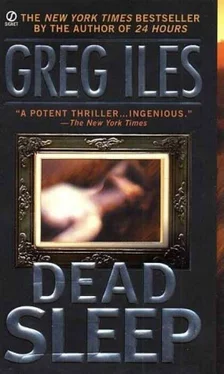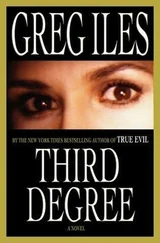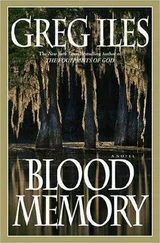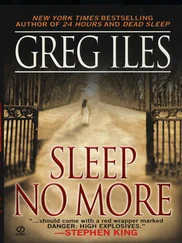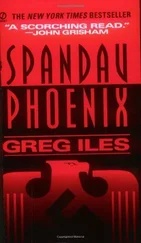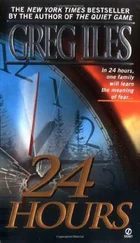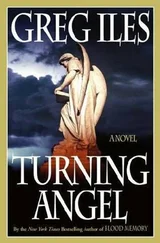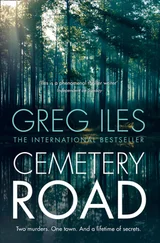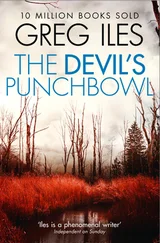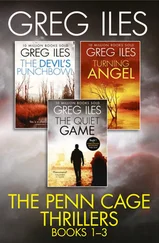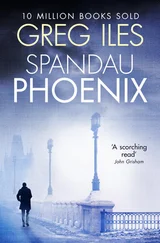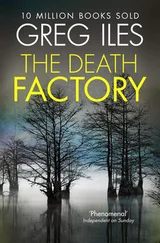“I do understand that,” I tell him, my eyes settling on Thalia’s inert body. “That’s why I’ve lived the life I have.” How can this man possibly see the ruin Thalia is now as a release? “But the painting you’re doing now must have a different theme.”
He nods, flicking his hand right, then left, his eye leading the strokes with lightning precision.
“It’s my emergence,” he says. “My freedom from the prison of duality.”
“From Roger, you mean?”
“Yes.” Again the strange smile. “Roger’s dead now.”
Roger’s dead? “How did he die?”
“I shed him, like a snake sheds its skin. It took a surprising amount of effort, but it had to be done. He was trying to kill me.”
Now Frank Smith speaks from my memory, confiding that Roger Wheaton wanted his help with suicide. “Roger went to Frank Smith for help, didn’t he?”
Wheaton’s eyes are on me now, trying to gauge the depth of my knowledge. “That’s right.”
“Why go to him? Why not to Conrad Hoffman? Your helper? Hoffman set this place up for you, didn’t he?”
Wheaton looks at me like I’m three years old. “Roger didn’t know Conrad. Except from that first show, which he quickly forgot. Don’t you see?”
I can’t digest the information fast enough. “Does – did- Roger, I mean – did he know about you?”
“Of course not.”
“But how do you hide from him? How have you done all this work without him knowing?”
“It’s not difficult. Conrad and I set up this special place, and this is where I do my work.”
“Is that what you did in New York, too?”
Wheaton cuts his eyes at me, a wolfish look in them. “You know about New York?”
“Yes.”
“How?”
“A computer program enhanced the faces in your earlier paintings, and an FBI man recognized one of the victims.”
“Kaiser, I’ll bet.”
“Yes.”
“He’s a sly one, isn’t he?”
I hope so. As Wheaton paints on, I ponder the chances of the FBI finding me here. They know what happened by now, of course. John and Baxter. Lenz. The NOPD. They know Gaines was not the killer. They’ve seen Wheaton’s finger painting, found Agent Aldridge. But what could possibly lead John to this place? The infrared photos? FBI planes shot total coverage of the French Quarter and the Garden District; they have a definite number of houses with courtyards by now. Dozens of agents are probably at the New Orleans courthouse right now, wading through the deeds to those places, searching for any connection to Roger Wheaton or Conrad Frederick Hoffman. Will they include houses with conservatories? Yes. John will be thorough. We talked about houses with skylights; anything that lets in lots of light will be on the list.
How long have they been looking for me? Is this the evening of the day Gaines was shot? Or the next day? Or the next? I suddenly realize that I’m terribly hungry. Thirsty, too.
“I’m starving. Do you have any food?”
Wheaton sighs and looks up at the glass roof, checking the diminishing light. Then he sets down his brush and walks to my left, out of my field of vision. Straining to turn my neck, I see him reach down into a brown grocery bag and bring out a flat narrow package about eight inches long. Beef jerky. Suddenly I’m standing in Mrs. Pitre’s driveway, outside the garage apartment Conrad Hoffman rented, where John found Hoffman’s stash of junk food. Beef jerky was part of it.
Beside the grocery bag stands something else that must have been Hoffman’s. An Igloo ice chest. The standard three-foot-wide plastic model, big enough for two cases of beer. Or IV bags filled with saline and narcotics. It depends on the customer, I suppose.
Wheaton’s gloved hands give him difficulty tearing open the yellow plastic wrapper of the jerky, but he knows I can’t manage it in my present state. At last he pulls it apart and walks over to the tub. With tremendous effort, I raise my hand and take the brown strip from him.
“Very good,” he says.
Ugh, I think as I slide the tacky stuff into my mouth. But when I grind the flat strip between my back teeth, my tongue savors the grease expressed from the meat like creme brulee. If only I had some water to go with it. I could cup some bathwater and drink, but I don’t fancy a mouthful of urine. If I regain my muscular control, I’ll drink from the tap.
“How do you know Roger is dead?” I ask. If I have a potential ally in this room, his name is Roger Wheaton.
The artist laughs softly. “You remember the finger painting on the floor at the gallery?”
“Yes.”
“That was his last gasp. His death throes. An infantile attempt at some sort of confession. Pathetic.”
“And now you don’t need your – his – eyeglasses anymore?”
“You see me painting without them, don’t you?”
Yes, but you’re still wearing your gloves. “What about your other symptoms?”
Wheaton glances at me, and his eyes flicker with confidence. “You’re very close to it now. You see, Roger’s efforts to kill me aren’t anything new. He’s been trying to kill me for a long time now. More than two years. Only I didn’t know it.”
“How?”
Wheaton pauses with his brush, then adds a few judicious strokes. “Autoimmune diseases are poorly understood. Multiple sclerosis. Scleroderma. Lupus. Oh, doctors understand the mechanics of how they kill you well enough. But the etiology? The cause? You might as well consult a witch doctor. Do you know what an autoimmune disease is? A phenomenon in which the body’s immune system – which evolved to protect the body from outside invaders – actually malfunctions and attacks the body itself. ” Wheaton gives me a triumphant look. “Isn’t that food for thought? How did the weakling come upon it? Perhaps his guilt and self-disgust were so consuming, his desire to kill me so powerful, that they manifested themselves physically. My disease waxes and wanes in severity as it progresses, and I noticed that the waxing phases occurred when Roger had control. Then he began actively trying to murder me, with Frank Smith’s help. With insulin. You know what that told me? There were chinks in the wall that separated us. He was beginning to see into my mind. That’s when you walked into my life. A mirror of a woman I’d already painted. A woman who was dead. Yet here was her double – her other half- perfectly healthy. I knew then. A new vision had come to me, and this painting was part of it. I had to save myself.”
I stare speechless from the steaming tub. The complexity of his delusion is staggering. Born in the mind of an abused child, it blossomed and flowered in the crucible of a dying artist’s fear of extinction.
“Are you – I mean, has it worked? Are you cured?”
“It’s happening. I can feel it. I’m breathing more easily. My joints are less stiff.”
“But you’re still wearing your gloves.”
A tight smile. “My hands are too delicate to take chances. And there’s systemic damage. That will take time to heal.” He glances up at the darkening sky. “I want you to be quiet now. My light’s almost gone.”
“I will. But there’s one thing I don’t understand.”
He frowns, but I push on. “You say you killed the women you painted to release them from their plight. To spare them a life of pain and exploitation. Is that right?”
“Yes.”
“Yet each Sleeping Woman was raped before she died. How can you stand there and tell me you’re sparing them pain, when you’re putting them through the worst thing a woman can experience short of death?”
Wheaton has stopped painting. His eyes glower with anger and confusion. “What are you talking about?”
Читать дальше
Конец ознакомительного отрывка
Купить книгу
